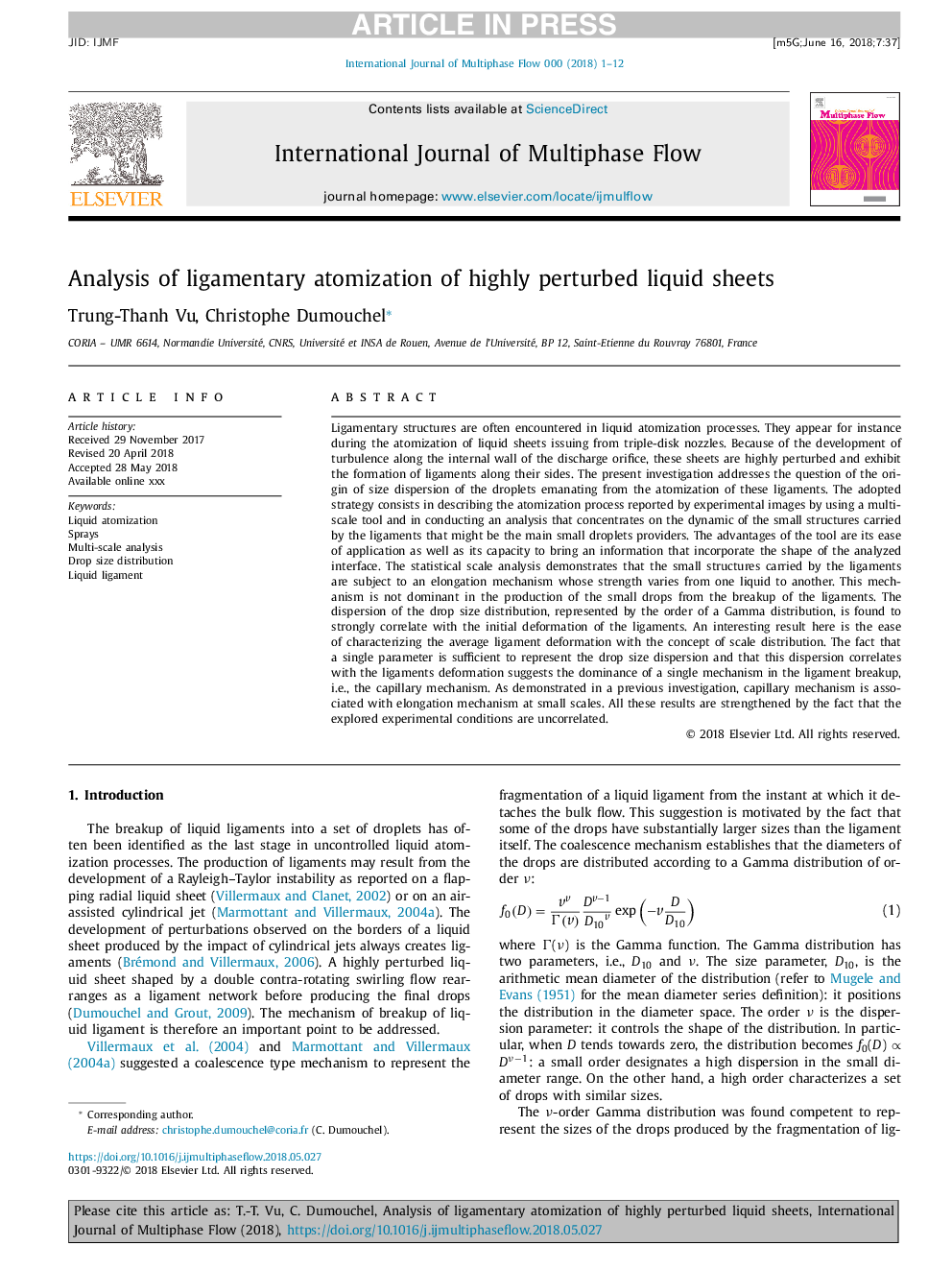| Article ID | Journal | Published Year | Pages | File Type |
|---|---|---|---|---|
| 8941988 | International Journal of Multiphase Flow | 2018 | 12 Pages |
Abstract
Ligamentary structures are often encountered in liquid atomization processes. They appear for instance during the atomization of liquid sheets issuing from triple-disk nozzles. Because of the development of turbulence along the internal wall of the discharge orifice, these sheets are highly perturbed and exhibit the formation of ligaments along their sides. The present investigation addresses the question of the origin of size dispersion of the droplets emanating from the atomization of these ligaments. The adopted strategy consists in describing the atomization process reported by experimental images by using a multi-scale tool and in conducting an analysis that concentrates on the dynamic of the small structures carried by the ligaments that might be the main small droplets providers. The advantages of the tool are its ease of application as well as its capacity to bring an information that incorporate the shape of the analyzed interface. The statistical scale analysis demonstrates that the small structures carried by the ligaments are subject to an elongation mechanism whose strength varies from one liquid to another. This mechanism is not dominant in the production of the small drops from the breakup of the ligaments. The dispersion of the drop size distribution, represented by the order of a Gamma distribution, is found to strongly correlate with the initial deformation of the ligaments. An interesting result here is the ease of characterizing the average ligament deformation with the concept of scale distribution. The fact that a single parameter is sufficient to represent the drop size dispersion and that this dispersion correlates with the ligaments deformation suggests the dominance of a single mechanism in the ligament breakup, i.e., the capillary mechanism. As demonstrated in a previous investigation, capillary mechanism is associated with elongation mechanism at small scales. All these results are strengthened by the fact that the explored experimental conditions are uncorrelated.
Related Topics
Physical Sciences and Engineering
Chemical Engineering
Fluid Flow and Transfer Processes
Authors
Trung-Thanh Vu, Christophe Dumouchel,
